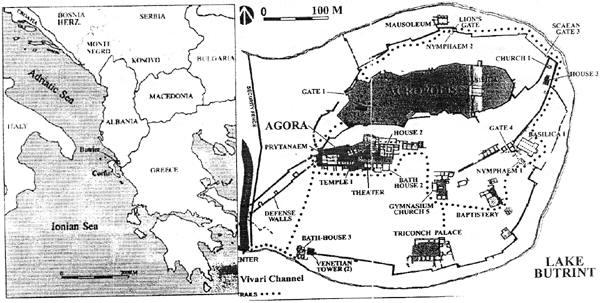 |
|
| Butrint
is situated on a low promontory on the southwest coast of Albania.
The site has been occupied since at least the 8th century BC,
although myths associated with its origins speak of the city's
foundation by Trojan exiles. By the 4th century BC a walled
settlement was established and the city became a successful cult
site, dedicated to Aesclepius. Augustus founded a colony at Butrint
and the town seems to have remained a relatively small Roman port
until the 6th century, Little is known of the site between the 7th
and 9th centuries. Its later medieval history was turbulent as the
town was involved first in the power struggles between Byzantium and
successive Norman, Angevin and Venetian states and second in the
conflict between Venice and the Ottoman Turks, By the early 19th
century it had dwindled to a small fishing village clustered around
a Venetian castle. Butrint is undeniably a beautiful place. Close to modern civilization yet with its monuments in thick woodland, it is reminiscent of the age of 19th-century tourism. Butrint's significance as described by UNESCO (2004): Inhabited since prehistoric times, Butrint has been the site of a colony, a Roman city and a bishopric. Following a period of prosperity under Byzantine administration, then a brief occupation by the Venetians, the city was abandoned in the late Middle Ages after marshes formed in the area. The present archaeological site is a repository of ruins representing each period in the city's development.
|
|
|
9/23/08 |
|
